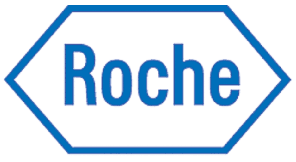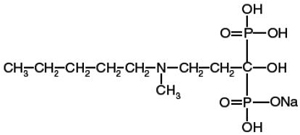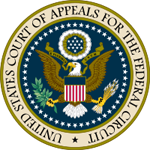[author: Andrew Williams]
 Last week, in Hoffmann-La Roche Inc. v. Apotex Inc., the Federal Circuit affirmed the denial of a request for a preliminary injunction from the U.S. District Court for the District of New Jersey related to the sale of Roche's osteoporosis drug Boniva®. The lower court had found that Roche failed to establish a reasonable likelihood that it would prevail against the obviousness challenges from the ANDA filers in the case. Because the majority of the three-judge panel of the Federal Circuit believed that the lower court did not abuse its discretion in denying the request, the decision was affirmed. However, Judge Newman dissented because she believed, in part, that the lower court and the majority did not properly consider the equities in the case. The dissent summed up the case with the statement: "[t]he only issue on this appeal is whether to preserve the status quo during this litigation, or whether to change it irretrievably." Judge Newman disagreed with the majority because, according to her, not only did the equities favor an injunction for Roche, but if the lower court had not ignored the evidence of unpredictable results in the art, it would have found that Roche had established a reasonable likelihood of defending the validity of its patents.
Last week, in Hoffmann-La Roche Inc. v. Apotex Inc., the Federal Circuit affirmed the denial of a request for a preliminary injunction from the U.S. District Court for the District of New Jersey related to the sale of Roche's osteoporosis drug Boniva®. The lower court had found that Roche failed to establish a reasonable likelihood that it would prevail against the obviousness challenges from the ANDA filers in the case. Because the majority of the three-judge panel of the Federal Circuit believed that the lower court did not abuse its discretion in denying the request, the decision was affirmed. However, Judge Newman dissented because she believed, in part, that the lower court and the majority did not properly consider the equities in the case. The dissent summed up the case with the statement: "[t]he only issue on this appeal is whether to preserve the status quo during this litigation, or whether to change it irretrievably." Judge Newman disagreed with the majority because, according to her, not only did the equities favor an injunction for Roche, but if the lower court had not ignored the evidence of unpredictable results in the art, it would have found that Roche had established a reasonable likelihood of defending the validity of its patents.
 Boniva®, the drug at issue in this case, is approved by the FDA as a once-monthly treatment of osteoporosis in post-menopausal women. The active ingredient is ibandronate, the use of which was already known in the art for the treatment for osteoporosis. However, when administered on a continuous basis, it can cause skin irritations and result in side effects in the digestive tract. Roche's scientists discovered that instead of daily dosings, a once-monthly dose of 150 mg could also be effective without causing the adverse conditions. Based on this work, Roche owns two patents, U.S. Patent Nos. 7,410,957 and 7,718,634, with method of treatment claims that cover the FDA-approved use. In 2007, Apotex, Watson Laboratories, Inc., and Mylan Inc. filed separate ANDAs to engage in the commercial manufacture, use, or sale of generic versions of once-monthly ibandronate products to treat osteoporosis. The present action was brought in the New Jersey District Court, and during the pretrial proceedings, Roche filed the present motion for preliminary injunction. The lower court denied this motion for the sole reason that Roche filed to establish a reasonable likelihood that it would prevail against an obviousness challenge from the Defendants in view of six prior art references. Roche appealed.
Boniva®, the drug at issue in this case, is approved by the FDA as a once-monthly treatment of osteoporosis in post-menopausal women. The active ingredient is ibandronate, the use of which was already known in the art for the treatment for osteoporosis. However, when administered on a continuous basis, it can cause skin irritations and result in side effects in the digestive tract. Roche's scientists discovered that instead of daily dosings, a once-monthly dose of 150 mg could also be effective without causing the adverse conditions. Based on this work, Roche owns two patents, U.S. Patent Nos. 7,410,957 and 7,718,634, with method of treatment claims that cover the FDA-approved use. In 2007, Apotex, Watson Laboratories, Inc., and Mylan Inc. filed separate ANDAs to engage in the commercial manufacture, use, or sale of generic versions of once-monthly ibandronate products to treat osteoporosis. The present action was brought in the New Jersey District Court, and during the pretrial proceedings, Roche filed the present motion for preliminary injunction. The lower court denied this motion for the sole reason that Roche filed to establish a reasonable likelihood that it would prevail against an obviousness challenge from the Defendants in view of six prior art references. Roche appealed.
 The majority began its discussion by pointing out that the grant or denial of a preliminary injunction is within the sound discretion of the lower court, and that reversal is appropriate if one or more of the findings were clearly erroneous, such that the lower court could be said to have abused its discretion. To receive such a request, Roche needed to establish that there was "a reasonable likelihood of success on the merits," which in this case was a likelihood that Roche would withstand an obviousness challenge in light of the burdens and presumptions that inure at trial. In fact, the majority pointed out that Roche did not challenge the framework employed by the lower court. Instead, Roche challenged the lower court's decision because it believed that the court applied an "obviousness to try" standard, and that the court failed to consider evidence of unexpected results.
The majority began its discussion by pointing out that the grant or denial of a preliminary injunction is within the sound discretion of the lower court, and that reversal is appropriate if one or more of the findings were clearly erroneous, such that the lower court could be said to have abused its discretion. To receive such a request, Roche needed to establish that there was "a reasonable likelihood of success on the merits," which in this case was a likelihood that Roche would withstand an obviousness challenge in light of the burdens and presumptions that inure at trial. In fact, the majority pointed out that Roche did not challenge the framework employed by the lower court. Instead, Roche challenged the lower court's decision because it believed that the court applied an "obviousness to try" standard, and that the court failed to consider evidence of unexpected results.
The majority disagreed with both of Roche's criticisms of the lower court's analysis. First, the majority pointed out that the District Court carefully evaluated each of the six references and the testimony of Roche's own expert. The lower court determined that the prior art evidenced a trend towards intermittent (such as once-monthly) dosing of ibandronate based on the total amount of ibandronate dosed in the same period under continuous (for example, once-daily) administration. In fact, Roche's expert conceded: (1) that one of the references provided a motivation to investigate monthly dosing of ibandronate, (2) that in the 2000-02 timeframe, the art was trending towards longer interval dosing, (3) that by the critical date, a skilled artisan would have had reason to investigate once-monthly treatment, (4) that determining a dose within a given broad range is a relatively routine matter, and (5) that by May 2002, one of skill in the art would have had a reasonable expectation that a once-monthly dose of ibandronate would have had some effectiveness. With regard to the objective evidence of non-obviousness, the lower court had found that Roche failed to detail its position, much less substantively point out the evidence. Instead, Roche apparently "incorporated by reference" its summary judgment pleading, which itself apparently only contained a few conclusory sentences with citation to the record. As a result, the lower court apparently did not consider this information. In siding with the District Court on this issue, the majority cited to the 7th Circuit Court of Appeals in noting that district court judges "are not archaeologists," and that it is not a district court's burden to "excavate masses of papers in search of revealing tidbits."
Finally, in response to the dissent's criticisms, the majority found that it owed deference to the lower court. Ultimately, the majority found no evidence of any clearly erroneous findings, much less any abuse of discretion on behalf of the lower court in denying the request for the preliminary injunction. Of note, during this appeal, the District Court concluded in May on a motion for summary judgment that the claims of one of the patents would have been obvious in view of the same art (plus three additional references), and made a similar finding with regard to the claims of the second patent earlier this month. Of course, even though it is interesting that Roche was ultimately unsuccessful in fending off the obviousness challenge at the lower court, those judgments are still subject to appeal, and appropriately played no role in the majority's decision.
Judge Newman in dissent complained that the equities in this case were not properly weighed, because if they had been, the result would have been the preservation of the status quo -- in other words, the ANDA filers would not have been allowed to market their products regardless of the expiration of the 30-month stay. Judge Newman pointed out the "panoply of biological and clinical evaluations" needed to bring an effective and safe drug to market, and the "millions of dollars" consumed to obtain regulatory approval. She noted that bringing a drug to market required a "heavy risk-laden investment," one which the defendants were now trying to enjoy with no cost or risk of failure. The problem with this analysis is that this criticism applies in every ANDA case, and therefore following this logic, an NDA holder would always get a preliminary injunction to maintain its exclusive rights until at least the conclusion of litigation. Whereas there is some appeal to this position, because it takes into account the substantial costs and risks of brining a drug to market, the Hatch Waxman statute clearly contemplates the ability of an ANDA filer to get approval at the end of the 30-month stay, and to "launch at risk" should the litigation still be ongoing at the time. In other words, Congress contemplated that not all preliminary injunctions would be granted, so the mere fact that a generic manufacturer files an ANDA should not be the sole determining factor whether an injunction should issue.
Judge Newman also criticized the lower court's refusal to consider Roche's evidence of unpredictable results. She pointed out that, apparently, both parties had cited to their respective summary judgment briefs in their filings for the present action. Nevertheless, Roche had the burden of establishing that it deserved a preliminary injunction, so if the parties were at fault for this practice, it should disproportionally affect Roche. Judge Newman also stressed the clear and convincing standard required to invalidate an issued patent, and that this burden was even greater in this case because the cited references were considered by the examiner and rejected. Therefore, in the end, Judge Newman believed that because of the equities in this case and the presumption of validity of the patents, "the fair and just action [would have been] to preserve the status quo during the litigation."
Hoffmann-La Roche Inc. v. Apotex Inc. (Fed. Cir. 2012)
Nonprecedential disposition
Panel: Circuit Judges Newman, Lourie, and O'Malley
Opinion by Circuit Judge Lourie; dissenting opinion by Circuit Judge Newman